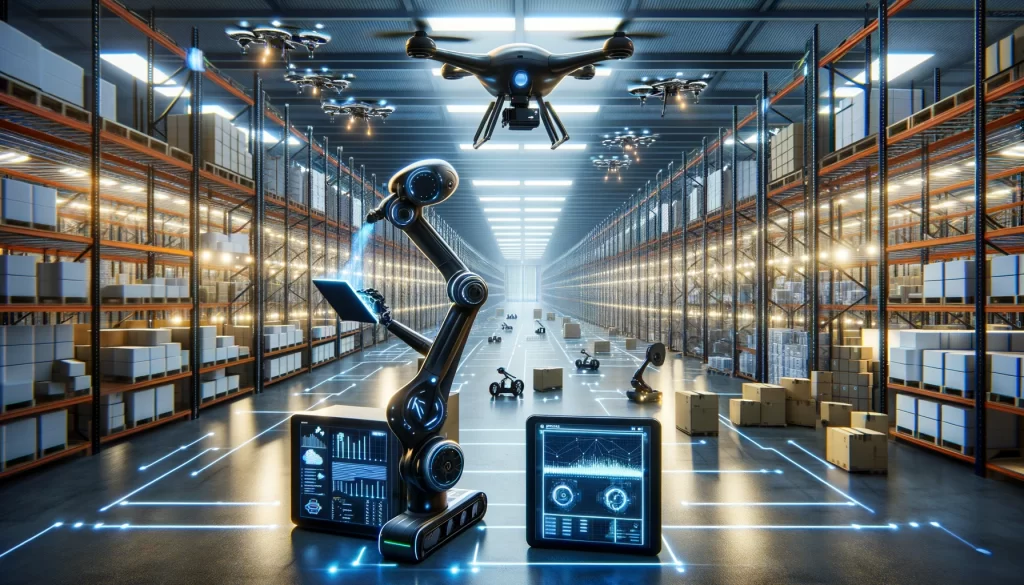The relentless march of technology continuously reshapes the landscape of industries far and wide, with the supply chain sector standing at the forefront of this evolutionary wave. In the heart of this transformation lies warehouse automation, a pivotal element that not only streamlines operations but also serves as a critical linchpin in enhancing supply chain resilience and efficiency. As we delve deeper into the era of digital transformation, understanding and embracing the latest trends in warehouse automation becomes imperative for those aiming to maintain a competitive edge.
Emerging Trends in Warehouse Automation
The arena of warehouse automation is bustling with innovation, each trend steering the supply chain industry toward greater heights of operational excellence. Robotics and Artificial Intelligence (AI) have emerged as game-changers, taking over repetitive and labor-intensive tasks with unparalleled precision and efficiency. The Internet of Things (IoT) is revolutionizing inventory management, offering real-time tracking and insights that ensure optimal stock levels and minimize the risk of errors. Meanwhile, advanced data analytics are paving the way for predictive maintenance and optimization, turning vast streams of operational data into actionable intelligence.
Technological Innovations Shaping the Future
Among the vanguard of warehouse automation innovations, Autonomous Mobile Robots (AMRs) stand out for their ability to navigate complex warehouse environments independently, dramatically enhancing material handling processes. Drone technology, once a novelty, now offers practical solutions for aerial inventory scans, providing a bird’s-eye view of warehouse operations and uncovering inefficiencies. Smart warehousing solutions, powered by AI, adapt and learn from ongoing operations, enabling dynamic decision-making that can significantly boost operational throughput and accuracy.
Impact of Automation on Warehouse Operations
The influence of automation on warehouse operations is profound and multifaceted. Automation has ushered in a new era of order fulfillment, where speed and accuracy are the norms, not the exceptions. Real-time inventory management has become a reality, thanks to IoT technologies, ensuring that stock levels are meticulously maintained to meet demand without excess. Furthermore, the scalability of automation solutions allows warehouses to flexibly adjust to peak periods, ensuring that sudden surges in demand are handled with grace.
Barriers to Adoption and How to Overcome Them
Despite the clear benefits, the path to adopting warehouse automation is not without its hurdles. High initial investment costs can be daunting, and the challenge of integrating new technologies with existing systems can deter many. Moreover, the human element—training employees to work alongside new technologies—cannot be overlooked. To navigate these obstacles, a phased implementation strategy can be effective, allowing for gradual integration and adjustment. Seeking expert consultation and investing in comprehensive training programs can also smooth the transition, ensuring that the workforce is empowered to leverage new technologies to their fullest potential.
Looking Ahead: The Future of Warehouse Automation
As we gaze into the horizon, the future of warehouse automation brims with possibilities. Research and development in AI and robotics continue to push the boundaries of what’s possible, hinting at a future where warehouses operate with unprecedented autonomy. Sustainability is also becoming a guiding principle in technology development, with innovations increasingly designed with environmental impact in mind. For supply chain leaders, staying informed about these evolving trends is not just beneficial—it’s essential for future-proofing operations and thriving in the competitive landscape of tomorrow.
Warehouse automation stands at the crossroads of tradition and innovation, offering a pathway to transform supply chain operations into models of efficiency and precision. By understanding and embracing the trends and technologies that shape this dynamic field, businesses can unlock new levels of operational excellence and secure their place in the future of the industry. The journey towards automated warehousing is an investment in resilience, adaptability, and success, and the time to embark on this journey is now.





